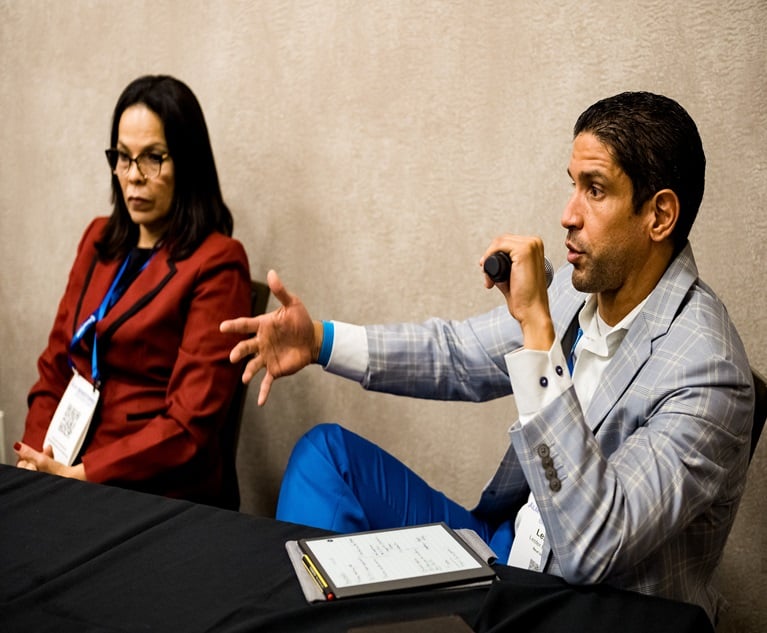Editor's Note: This is the fourth article in a10-part series identifying the best sales techniques for 2015. Toview the rest of the series, visit 100 best sales ideas 2015.
|40. Share your story.
|If you want to become a magnet for attention and loyalty, youhave to use the most powerful gift you have. That gift is yourpersonal story. It will separate you from allof your competition and it will emotionally connect your audienceto you on a much deeper level.
|Carefully craft your story: What made you who you are, what youstand for. People will gravitate to you in a bigway.
|— Shawn Sparks, VP of Marketing, Advisors Excel
|| 39. Offer Lunch 'N Learns.
39. Offer Lunch 'N Learns.
Monthly lunch classes can be a cost-effective way to buildrelationships with existing clients and create regular,low-pressure opportunities to introduce referrals. It creates anopen communication forum and proactive opportunity to connect.
|— Carl Smith, Smith Tax Advisory Group
||
38. Ask to replace their current LTC plan.
|Approach a prospect or client with the following statement: “Iwant to help you replace your current long-term care plan.” Unlesshe or she already owns some form of long-term care insurance, you willlikely get some form of the response, “What plan?” You see,everyone does already have a plan to pay for LTC costs. If theydon't have insurance and aren't on Medicaid, their current plan isto spend their own money until most of it is gone and they can thenqualify for Medicaid. The consequence of that type of planningis that then both spouses need to be stressed. In other words, theywill worry about loss of independence, burden on family members,loss of lifestyle for the healthy spouse, loss of security,etc.
|Is that a good plan? Tell the prospect or client, “Let's discussalternative plans that allow you to keep your independence and notburden family members. Plans that allow you to preserve assets andfinancial security.” Why do it this way? It's much easier toreplace something that already exists, that is defective, with abetter version, than it is to sell something “new.” Replace badplans with good plans that provide positive consequences for thefamily.
|— Bill Jones, President of NAIAinc.com, a provider of LTC planningoptions
||
37. Practice active listening and personalizeeverything.
|This is one of the best (and easiest) ways to build a loyalclient base and encourage referrals. Studies show personalized digitalcorrespondence such as, “Dear Tom” vs. “Dear Client” canpotentially double your conversion rates. Go a step further and useyour contact manager to take notes on conversations with clients;whether it's about their financial goals or what their children aredoing, keeping notes will assist you in growing the relationship ona more personal level.
|Thank you notes and birthday wishes are always appreciated, butseldom sent. Such tailored service shows clients you care aboutthem as people and this personal feeling is what converts clientsinto loyalists who are far more likely to promote your brand andbring you referrals. Remember, marketing to NEW clients costs 6–8times as much as marketing to existing clients, so take care ofyour clients and they'll take care of you.
|— Kim Maynard, President, TheNext Investment
||
36. Find your why.
|At the core of every successful business is a passionate belief.It's called the why. Figure out your why and the howbecomes simple. Use your why to make goals. Have you everheard of baseline goals or stretch goals? A baseline goal issomething you expect to meet no matter what. The stretch goal is asomething you hope to hit. How absolutely stupid! Baselinegoals are nothing more than justification of your rationalizationsto why you didn't or too often couldn't reach your stretchgoal. Goals based on the why will lead you much farther and indirections you couldn't anticipate.
|I don't think we've ever hit one of our goals. Although wemissed last year's goal, this year's was still bigger. Yet alreadywe've almost surpassed last year's numbers. Every new goal is setbased on our why. When we focused on our why, we noticed most topproducers have multiple offices, have a radio show, TV show orboth, and have adequate office support staff. If you want biggerresults, then observe and duplicate bigger producers. If they havethree offices and you still work from home, then start with a smalloffice. If they've got five support staff and you have none, thenstart by hiring one part-time person. If they're on the radio andyou're not, then talk about this desire to anyone or everyone whowill listen. It's amazing how things will fall intoplace.
|Don't mistake excuses for valid rationalizations. I have, anduntil you stop, those “rationalizations” will ensure you keep doingwhat you've always done, which means you'll get what you've alwaysgotten.
|Lastly, be vocal about where you want to be. Some call it fate,luck, law of attraction, or divine intervention. I wish I couldcredit my masterful marketing brain (insert sarcasm) for everythingwe've accomplished, but I can't. We've been very blessed, lucky, orfortunate . . . whichever term you wish to subscribe.
|— Michael Markey, Co-founder and Owner, LegacyFinancial Network
||
35. Public adulation: Give it away.
|The cheapest and most effective leadership tool is praising yourteam in public. When someone does something awesome let the entiregroup know. Praise them in a sales meeting. Praise them ata group event. Praise them at a happy hour. It costs you nothingand the good will generated will make the person receiving thepraise work even harder for and with you. In addition, other teammembers will want to be praised as well — lifting theirproductivity.
|— John Richard Pierce, Jr., author of 'Sell More and Sleepat Night'
||
34. Evolve beyond solution selling.
|Prospects have no shortage of solutions. They are inundated withadvertisements and offers and blog posts and letters. Whensolutions are around every corner, prospects don't need you to tellthem how to solve their problems. If you are going to stand out,you need to be different.
|Consider this: New sales research out of the CEB has found that prospects respondbetter to salespeople that are willing to challenge their thinkingand reveal new insights into their businesses. In this new salesenvironment, a sales approach rooted in education and uncoveringnew opportunities turns heads faster than an approach built aroundpitching well-known solutions to well-known problems. What haven'tyour prospects considered? What is around the bend that you canilluminate for them? That's more compelling.
|—John Pojeta, Vice President of Business Development,The PT ServicesGroup
||
33. Attend association meetings in your targetindustry.
|You need to have a target industry. Focus on anindustry where you want to work or have clients. Learn about trendsin the industry, key players, key companies, key LinkedIn groups,key anything. Use both the online and offline strategies you'relearning, or that you know, to get the most out of the associationmeetings you attend. Become a member if you're serious. Look tohelp the leaders in the chapter with their objectives and theymight help you with yours. Stay in touch. Set up meetings. Get toknow them better. Make it fun.
|— Michael Goldberg, Speaker, Author, Consultant,Boxer, president, Knock Out Networking
||
32. Learn to control your emotions.
|Eagerness to score big sales can cause you to makemistakes. To win, you need to control your emotions, whichis, of course, easier said than done. Good sales opportunitiesget my adrenaline flowing. I see so clearly how I can help, I knowI can make a difference, and I want to pounce on myprospect.
|But that doesn't work. Instead, it creates serious, sales-endingobstacles. Prospects decide they don't want to play with youanymore. They begin to think you're only out for yourself. It'sprobably not true (although I have to admit that early in my careerit was).
|If you really want to win at the game of sales, it's crucial tolearn to control your emotions. Sometimes the first step ishardest: recognizing your own actions are causing theproblems. Then, you have to figure out new ways to respond andperhaps even learn new skills. It's hard work, but it's worth it.
|— JillKonrath, Speaker, Author, Sales Accelerator
||
31. In the worksite long-term care insurance (LTCI)market, look for an internal sponsor who can offer advocacy andaccess.
|The best employer-sponsored programs have someone within thecompany who is a strong advocate for coverage. This person may haveexperienced caregiving intheir own family, or may have strong personal reasons forimplementing a program (underwriting concessions or discountedpremiums). This person can help you drive participation. They canalso help with access to employees, which is key. The better thecommunication plan, the better your results. If the companypromotes the program through email, intranet, or seminars/webinarsyou will see success. If the group limits access to employees ormembers, it's going to be an uphill battle.
|— Deb Newman, Founder, Newman LongTerm Care
|Want to continue reading?
Become a Free PropertyCasualty360 Digital Reader
Your access to unlimited PropertyCasualty360 content isn’t changing.
Once you are an ALM digital member, you’ll receive:
- All PropertyCasualty360.com news coverage, best practices, and in-depth analysis.
- Educational webcasts, resources from industry leaders, and informative newsletters.
- Other award-winning websites including BenefitsPRO.com and ThinkAdvisor.com.
Already have an account? Sign In
© 2024 ALM Global, LLC, All Rights Reserved. Request academic re-use from www.copyright.com. All other uses, submit a request to [email protected]. For more information visit Asset & Logo Licensing.








